Covid five years on: how the pandemic’s first 100 days reshaped Australia
The Covid-19 pandemic officially started five years ago. Australians lived through the early months of 2020 watching a global health catastrophe unfold and having their own lives upended. Here’s a reminder in pictures of how the first 100 days played out in Australia.
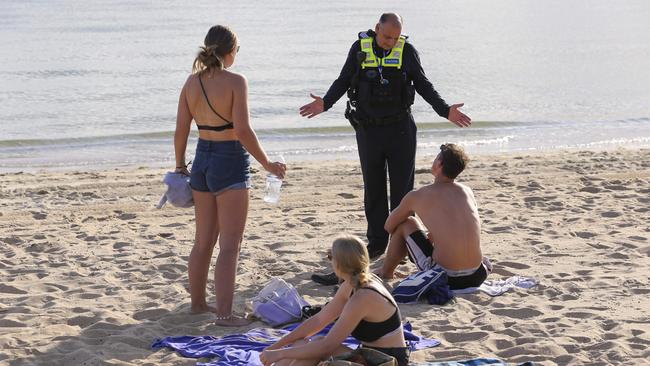
Five years on from the day the World Health Organisation officially declared Covid-19 a global pandemic on March 11, 2020, it’s time to acknowledge the anxiety and uncertainty we lived through in those early days and weeks.
Those first 100 days of Covid led to profound social, economic and political change, some of which persists. But the passage of time offers perspective, and everyone has their own stories of the pandemic – brave, funny, heartbreaking.
Who can forget home schooling? WFH. Hotel quarantine. PCR and RAT tests. PPE. Lockdown zones and state border restrictions rigorously enforced. Playgrounds closed. Weddings and funerals by Zoom. Businesses smashed. Tourism and hospitality shot. JobKeeper. Interest rates at virtually zero. Football matches played in empty stadiums. State premiers and chief health officers thrust into the national spotlight.
This photo gallery documents Australia’s experience of the first few months of the Covid-19 outbreak. Some of the images bring up painful memories.
It shows the vast differences in experience across the nation. We marked Anzac Day in 2020 by standing at the end of the driveway. There was panic buying and hoarding of toilet paper. Elbow bumps replaced handshakes. Grandparents in nursing homes waved at their grandkids through a closed window. And we saw the incredible effort of the nation’s health workers, wearing full PPE for months on end. This was when we were still trying to control the outbreak, trying to “flatten the curve” as political leaders described it.
With five years of hindsight, there are many lessons. We know now about the social and mental health impact of keeping kids out of school for so long in states such as Victoria. And we question the value of sweating the small stuff, such as banning outdoor activities such as bike riding or surfing in a bid for social distancing.
But in those first few months of 2020, information on the virus was still scant, overseas death rates were high and a vaccine was yet to be developed. Time is a healer, but our response to the next global health pandemic will be profoundly shaped by the good, and the bad – and the ugly – of our response to Covid-19.
March 11
The day the World Health Organisation declares Covid-19 a global pandemic, The Australian publishes on the front page this picture of a queue of people waiting outside Royal Melbourne Hospital for a Covid test. At the time the government was trying to encourage only high-risk cases, such as people returning from overseas, to be tested. Picture: Andrew Henshaw
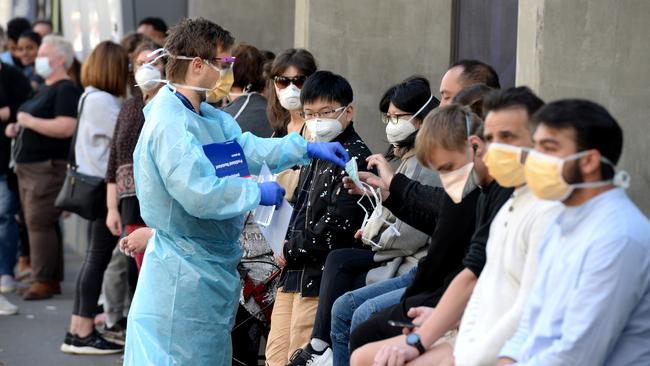
March 13
Two days after Covid-19 officially becomes a global pandemic, Scott Morrison sits down with state premiers and territory leaders at the Council of Australian Governments in Parramatta. The meeting leads to the formation of the first National Cabinet, with Covid as its number one focus. During the pandemic, the premiers gain unprecedented power and popularity. Picture: David Gray/AFP.
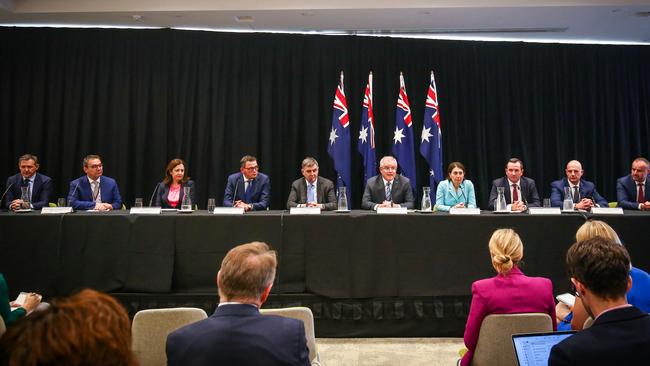
March 16
Covid starts to impact schools, with St Christopher’s Catholic Primary in Sydney closing while cleaners conduct a “hygiene sweep” of a classroom after a person who had been in the room a few days before contracted Covid. At this time some private schools in Victoria announced they were closing campuses, with education to continue virtually. Picture: Monique Harmer/AAP
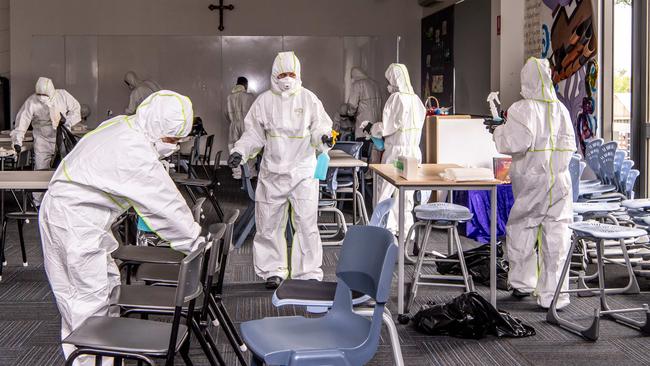
March 19
The AFL’s traditional opener, Richmond v Carlton, is a very different affair on March 19, 2020, as it is played with no crowd present. This is just the start of a disrupted season in the elite football codes. Picture: Michael Dodge/AAP
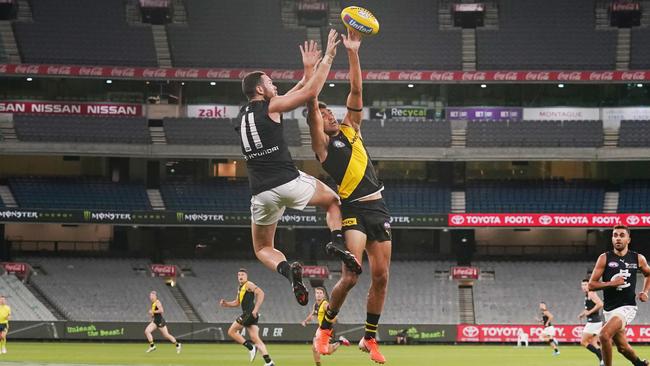
March 20
Australians reveal themselves as a nation of panicky hoarders, with supermarket shelves stripped of toilet paper and other essentials. Even this early in the pandemic retail outlets put limits on the purchase of essential items, with police present to keep the peace. Picture: James Gouley/AAP
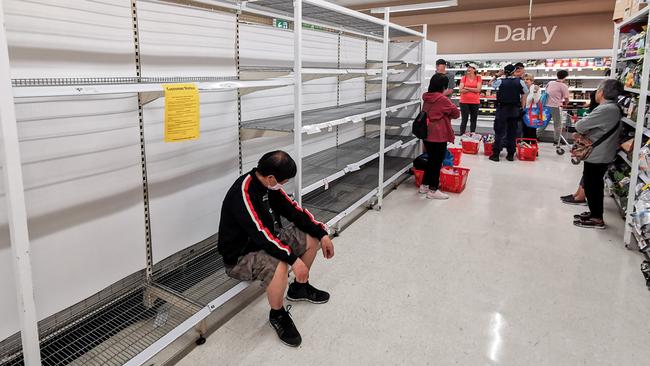
March 20
Crowds pack Bondi beach on a beautiful day, turning their backs on Covid. But this picture sparks questions about whether the NSW government is enforcing its restriction of non-essential outdoor gatherings of more than 500 people. Picture: John Fotiadis/AAP
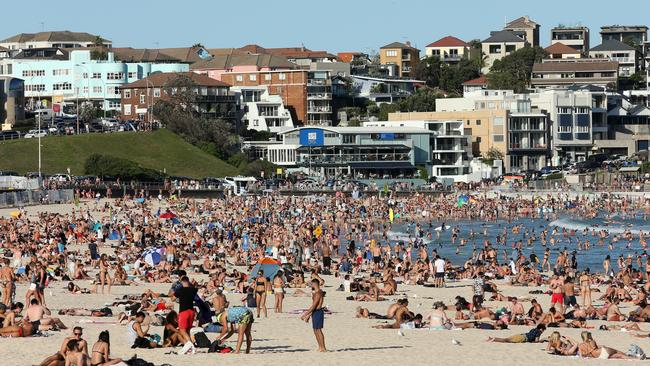
March 22
What a difference two days make. The NSW government moves to close Bondi Beach the next day, so by Sunday March 22, 2020 one of the world’s most famous stretches of sand is deserted. Picture: Jenny Evans/Getty
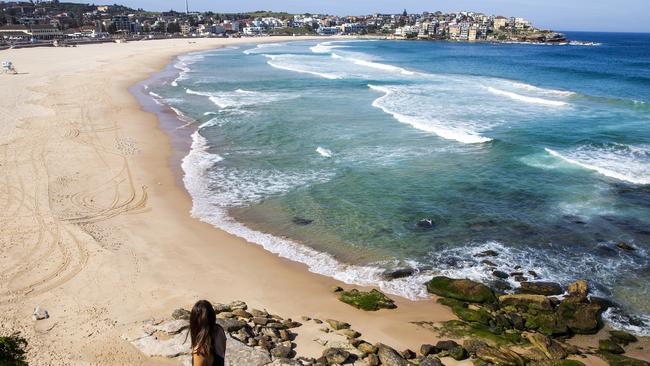
March 24
State differences start to emerge in the handling of Covid, with South Australia closing its borders to incomers. Returning residents are required to go into isolation for 14 days. Constable Ashleigh Broadbent, with clipboard in hand, patrols near the South Australian border at Pinnaroo. Picture: Kelly Barnes/AAP Image
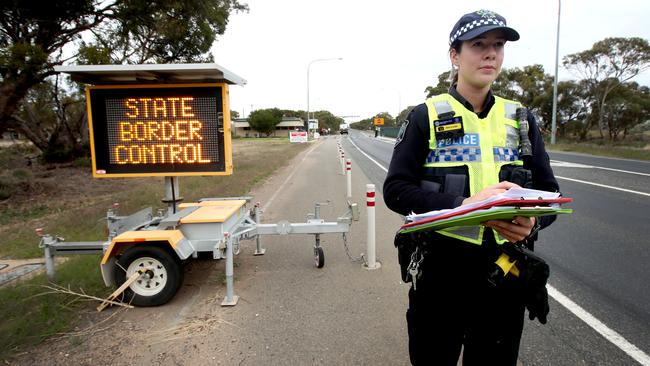
March 26
Indigenous communities including Yarrabah, south of Cairns in Queensland, are subject to strict lockdowns after health experts warn they are more susceptible to Covid-19. This leads to protests in May by the Yarrabah community about their lack of freedom of movement. Picture: Brian Cassey
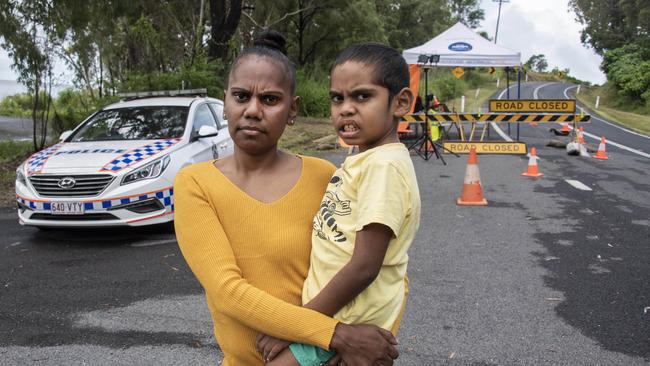
March 27
Victorian beachgoers defy Covid social distancing measures, showing up in numbers on a glorious late March day on St Kilda and Elwood beaches. But police swoop in late in the day to clear the crowds. ‘No one should be at the beach,’ Victorian Premier Daniel Andrews declares. Picture: Wayne Taylor

March 29
The only people able to fly into Australia from overseas by this time are returning citizens and residents, who are shepherded from their planes to chartered buses to travel to hotels to undertake mandatory 14-day quarantine under guard. Around 20,000 returning Australians land back in the country in the weeks that follow. Picture: Jane Dempster
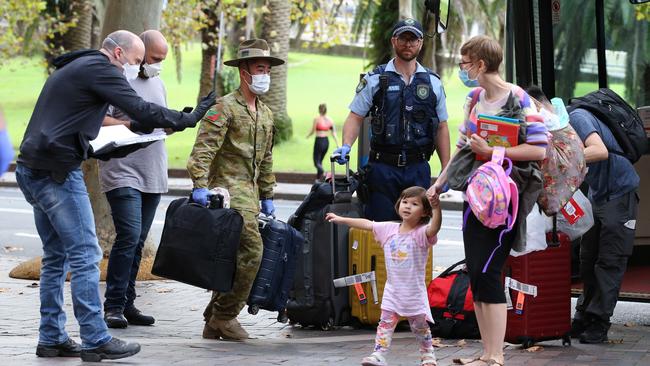
March 30
Hotel quarantine doesn’t sit well for some returning Australians, with the hotels being guarded by local police, defence personnel or even private security guards. Here a frustrated traveller gestures from a hotel room at Crown Promenade Hotel in Melbourne. Picture: James Ross/AAP Image
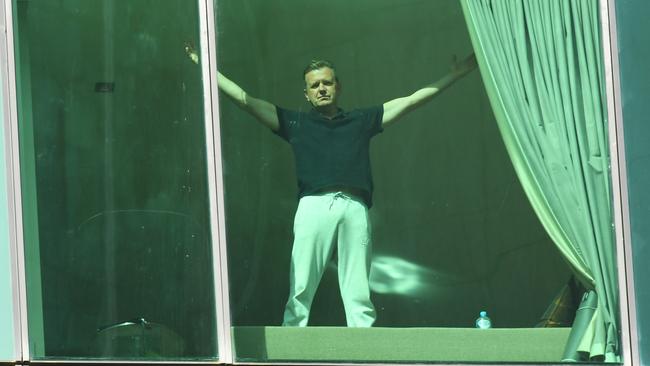
March 30
The nation’s parks and playgrounds become forlorn sites, with swings and jungle gyms off limits to children. Howard Florey Reserve in Parkside, Adelaide, is taped off to stop families meeting up and mingling. Picture: Vrenton Edwards/AAP Image
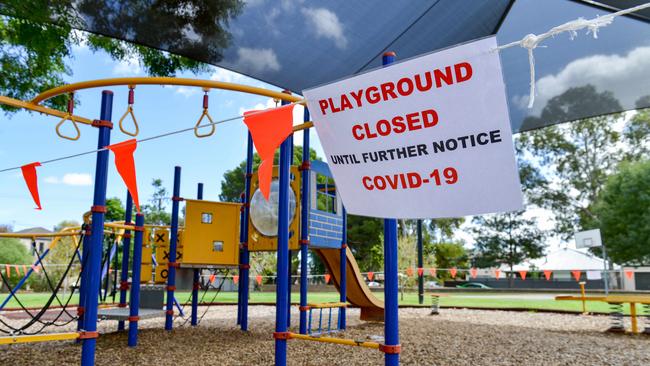
April 2
The Ruby Princess incident is one of the most distressing in the early weeks of the Covid outbreak. Nearly 2700 passengers disembark from the ship on March 19, spreading throughout the country. Some develop symptoms over the coming days. Eventually more than 700 cases of the virus are linked to the cruise ship, and 28 deaths. NSW Police and Australian Border Force conduct a medical assessment after the passengers leave. Picture: Seven News
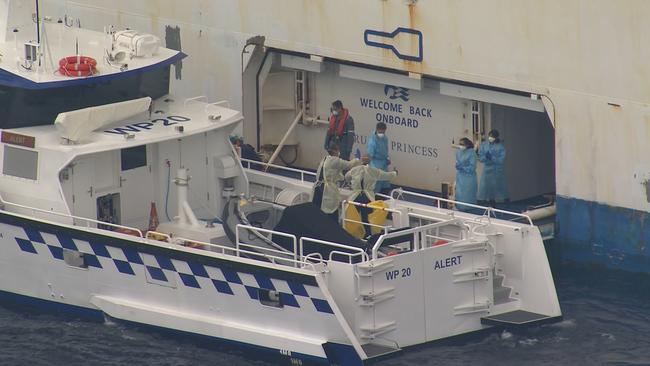
The outbreak continues on the ship in coming days, with this staff member being evacuated on April 2 and transported to a waiting ambulance. Picture: Adam Yip
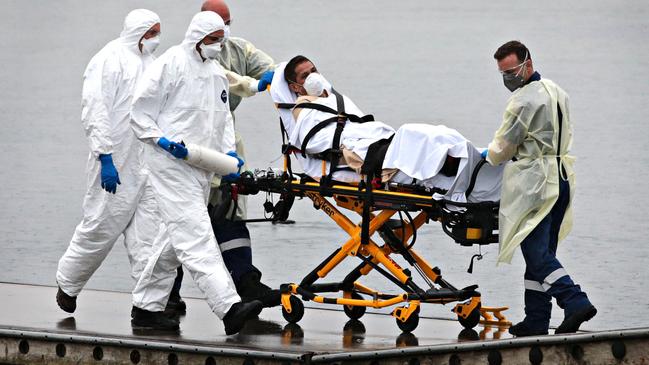
April 6
Drive through Covid-testing starts popping up around the country, including at this site in North Bondi. The first drive-through clinic remains a fixture at the beach until June 2022. Picture: John Feder
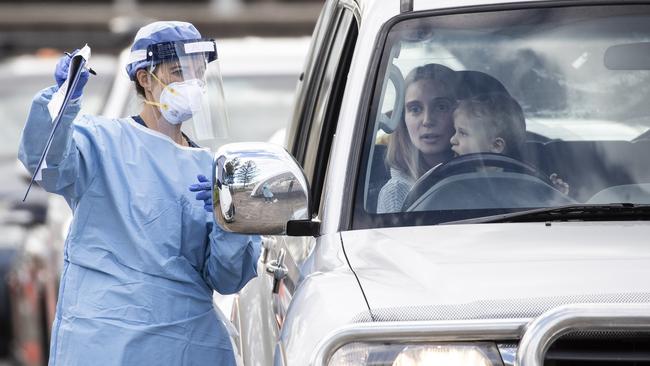
April 8
With restrictions on movement now commonplace, the hospitality and tourism industries are just two in serious trouble. On April 8 the Morrison government introduces JobKeeper legislation, providing up to 6 million workers in eligible businesses with a benefit of up to $1500 per fortnight. The package, backed by the Opposition, was worth up to $130bn. And by this stage fist bumps have replaced handshakes. Picture: Sam Mooy/Getty
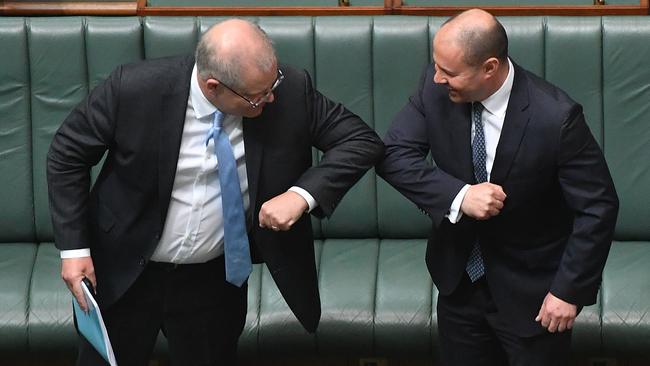
April 9
Aged care residents are among the worst to suffer in the lockdowns of the early stage of Covid, with this family visiting their loved one, 92 year-old Hilkka Ovaskainen, through the “waving window” at her aged care facility Finncare in Brisbane’s south. Hilkka is being visited by her son Vesa Orenen, granddaughter Rebekah Barker and great grandchildren Maverick, Milla and Banjo. Picture: Lyndon Mechielsen
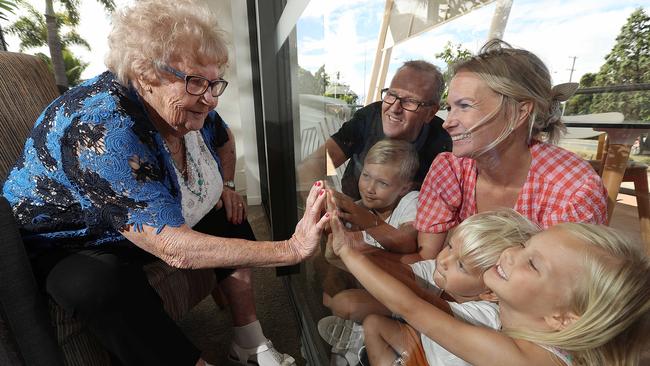
April 17
Throughout the early months of the pandemic the nation’s health and hospital workers operate under significant pressure. These Royal Melbourne Hospital workers are staffing Covid-19 wards and ensuring the ICU and Emergency wards are ready for any major outbreak. Picture: David Caird
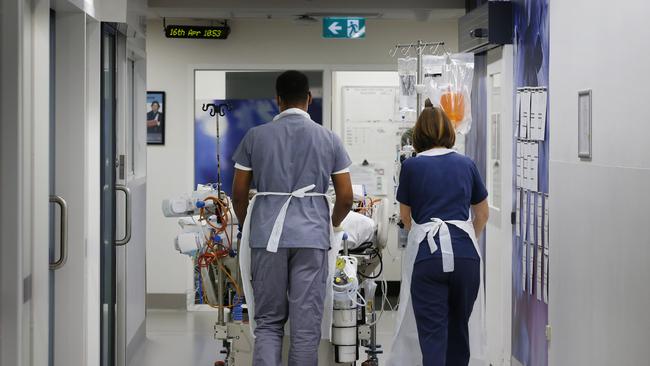
April 17
Families and neighbourhoods try to make the most of the Covid restrictions, chatting over back fences, rekindling old hobbies and getting to know each other again. The Farquharson-Selby family from Sunrise Beach, north of Brisbane is one such clan. Dad Jim is an avid cook and guitar player, Mum Heidi practices her pilates online, 13-year-old Esmerelda doesn’t let the cancellation of her ballet lessons diminish her enjoyment of dancing and son Hamish is happy to be able to keep surfing. And there’s Cilla the dog who is getting more walks than ever. Picture: Dave Gleeson/Surfshots
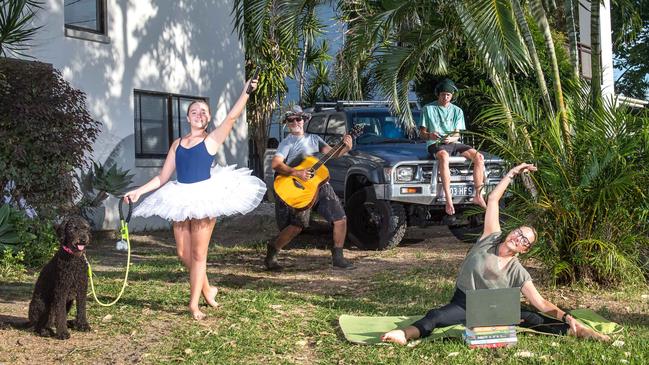
April 21
With international and domestic travel grinding to a halt, Virgin Australia is forced into voluntary administration after racking up a $5bn debt. A shocked-looking chief executive Paul Scurrah, pictured here with administrator Vaughan Strawbridge of Deloitte, resigns later that year after the completion of the sale of the airline to Bain Capital in August. Picture: John Feder
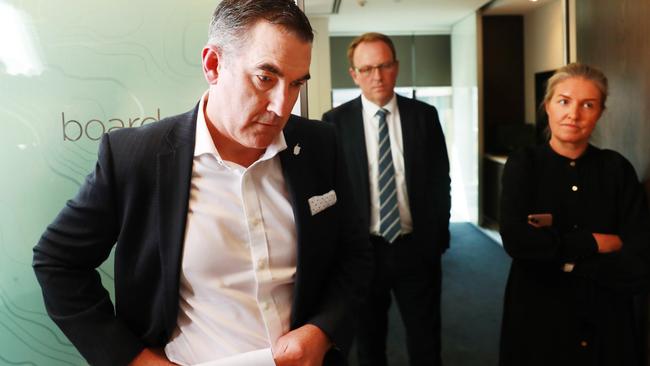
April 24
Anzac Day is different in 2020. People are encouraged to stand in their driveways at dawn, with locals encouraged to play the Last Post on whatever musical instrument they can find. Renowned jazz musician James Morrison does the honours in his home town of Mt Gambier. Picture: Morgan Sette
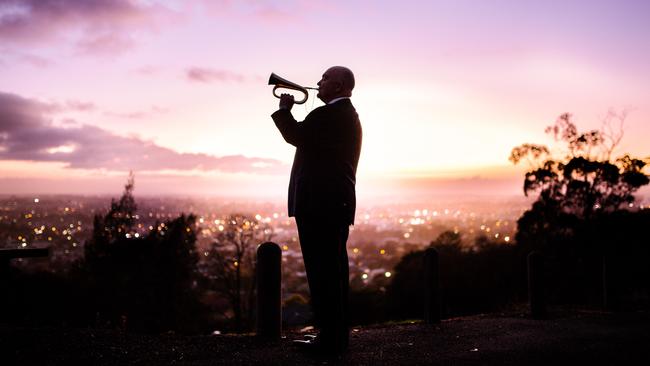
April 26
Efforts to control Covid’s spread leads to the release of the Morrison government’s COVIDSafe app in late April. The app is later widely seen as a failure, having cost $21m to develop and launch, but leading to just two cases of Covid being identified and 17 close contacts. It is deleted by the Albanese government in August 2022. Picture: Scott Barbour/AAP Image
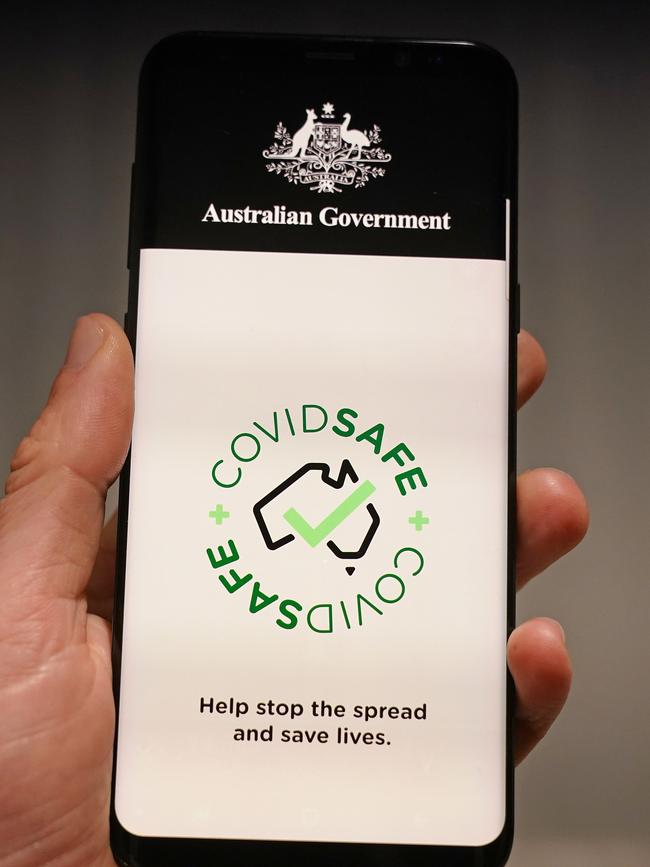
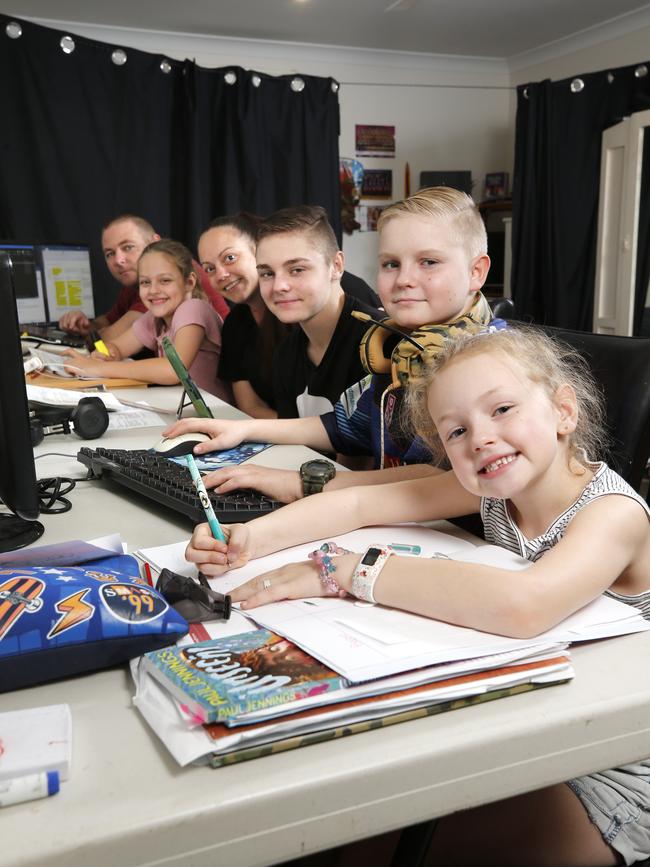
April 30
As schools close and more parents worked from home, family life becomes more complex. The Driver family from Albany Creek in Brisbane have four children, Kayden, Layla, Rylan and Shylah all home schooling, while parents Daniel and Kylie are also working from home. Picture: Josh Woning/AAP Image
June 6
Thousands of protesters ignore the health advice and warnings from political leaders to participate in Black Lives Matter marches across the country, including in Melbourne. Federal and state leaders all warn it is a bad idea to go as the gatherings could lead to greater spread of the virus, but state premiers don’t impose a ban on the protests, despite them being in breach of social distancing restrictions for mass gatherings. Picture: Alex Coppel
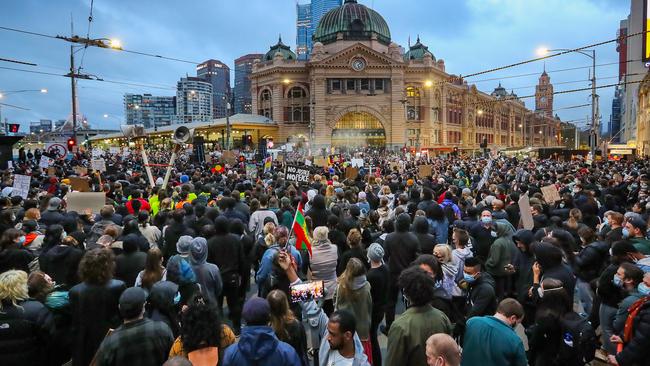
June 8
Yet just two days later, Victorian police step in and order the closure of the Rye Pier after a weekend during which crowds gather to watch the spider crab migration. Picture: Mark Stewart
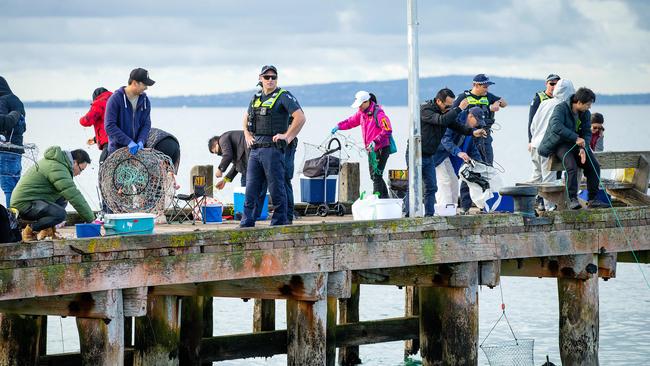


To join the conversation, please log in. Don't have an account? Register
Join the conversation, you are commenting as Logout